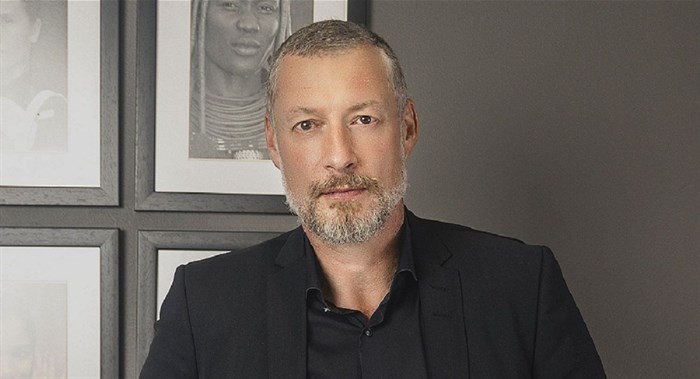Operating in an ever-changing and increasingly global economic environment, it is imperative for organisations to embrace diversity to maintain their competitive edge. Diversity is no longer about being politically correct - it is crucial for an organisation to thrive. However, diversity without active, ongoing inclusion practices may do more harm than good. While many people refer to these two terms interchangeably, diversity and inclusion are two very distinct concepts.

Brian Eagar
So, what are the distinctions, how does one leverage diversity, and how does leading inclusively help you achieve business objectives?
Diversity is the “who” and the “what”: who’s sitting around the table, who’s being hired, who’s being fired and who’s being promoted. It focuses on the quantifiable representation of individual differences in a workforce. Most commonly, this is gauged according to demographics such as race, ethnicity, gender, sexual orientation, socio-economic status, age, religion and cultural background. However, there are different types of diversity less widely acknowledged or easy to identify. Cognitive diversity refers to differences in people’s worldviews, work and learning styles, and the wide variety of ways in which people solve problems and make decisions.
Diversity can also be organisational and consist of distinguishing elements between people in the workplace such as management status, responsibilities, seniority or pay.
Inclusion
Inclusion is “how” diversity thrives and comes to life within an organisation. It refers to the procedures, policies and behaviours that a company put in place to ensure the needs and differences of all employees are taken into account. In essence, it is the sense of belonging felt by an employee and speaks to their own unique lived experience. Therefore, the most effective diversity and inclusion initiatives are organised around employee experiences of inclusion, rather than tick-the-box, best-practice checklists. An inclusive workplace environment must be purposely designed, nurtured, and supported – continuously. True workplace inclusion removes barriers, discrimination and intolerance and is achieved when all team members feel respected, valued and psychologically safe.
The business benefits of cultivating an inclusive work environment
Today we know that although diversity can be created through deliberate hiring practices, a diverse work environment in itself doesn’t do much more than fill a quota – it does not guarantee inclusion. If a diverse organisation does not take deliberate steps to drive workplace inclusivity, the resulting pressure to conform, frustration and conflict may well lead to disengagement. Unfortunately, not everyone embraces diversity – some people are just uncomfortable with the unfamiliar. From an evolutionary neuroscience perspective, our brains are hardwired to favour the known. Perceived differences in values and behavioural norms, communication barriers, as well as inherent stereotypes and bias can all form part of a diversity backlash.
The empirical evidence that corroborates the benefits of investing in a diverse workforce and developing a truly inclusive workplace culture speaks for itself. The intellectual capital of a diverse workforce is known to propel creativity and initiative. It encourages authentic engagement with clients, stakeholders, consumers, vendors, and partners.
In an inclusive work environment, employees feel wanted, heard, and engaged; they are eager to join your organisation and reluctant to leave. Consider these additional benefits:
- Employee performance: People from diverse backgrounds, nationalities and cultures bring fresh, unique insights to the table. Team members are able to execute more quickly, make better decisions, and solve more complex problems – which all lead to increased productivity.
- Workplace morale: Employees do their best work when they feel like they can bring their full selves to work without fear of rejection.
- Company revenue/financial performance: Inclusive companies are more likely to hit financial targets, and highly diverse teams are more likely to outperform with regards to profitability.
- Innovation: Inclusive organisations are more likely to be leaders of innovation. A homogeneous culture stifles innovation due to the pressure to conform.
- Agility/Resilience: Organisations with inclusive cultures are more likely to anticipate change and respond effectively. Inclusive and cohesive teams are more flexible and responsive to changing demands.
Leading an inclusive workforce
To leverage the benefits of diversity, organisations need to adopt a systematic, business-led approach to inclusion grounded in three co-dependent characteristics: psychological safety, trust and team cohesion.
Psychological safety is not merely the latest fad or HR speak. Coined and defined by Harvard Business School professor Amy Edmondson, psychological safety refers to a belief that one will not be punished or humiliated for asking for help or speaking up with ideas, questions, concerns or mistakes. In short, it is how comfortable individuals are with taking risks and being vulnerable within their team. It matters because not only is psychological safety crucial for fostering inclusion, it is also the bedrock of all high-performing teams.
So how can leaders create a psychologically safe environment? Consider these three fundamentals:
- Firstly, leaders need to set the example. Too often we don’t want to seem ignorant, so we don’t ask questions. We don’t want to seem incompetent, so we don’t admit weakness or mistakes. We don’t want to seem intrusive, so we don’t offer ideas. We don’t want to seem negative, so we don’t critique the status quo. This robs us and our colleagues of small moments of learning. Leaders need to be ready and willing to show employees that it’s ok to speak up and take these interpersonal risks.
- Secondly, leaders need to practice proactive inquiry by actively soliciting input from all team members. An inclusive leader deliberately seeks out difference and gives people on the periphery the chance to speak up. This instils a sense of trust that every voice is welcome and valued. Self-protection, however, is a natural response, so the invitation needs to be genuine and compelling if people are going to make the choice to engage. By demonstrating situational humility, leaders can help employees see that every person in the organisation has something to learn. Leaders could set the example by publicly acknowledging an oversight or thanking someone for their contribution when they stand corrected.
- Finally, leaders need to ensure that they respond constructively when team members do ask for help, take a risk, or speak up. A psychologically safe environment means signalling to employees that their concerns bear weight and that everyone’s input will be equally respected. Inclusive leaders visibly show encouragement, gratitude, appreciation and recognition toward employees through positive comments for contributions made. This may mean, for example, publicly celebrating someone for taking a prudent risk even though it didn’t work out.
A cohesive team is high-performing team
When psychological safety creates the platform for vulnerability-based trust to develop, team members feel secure enough to be honest with each other. When trust is truly in place, any debate or conflict is constructive. Constructive conflict, in fact, is critical to ensuring all points of view and aspects of issues are discussed, understood, and taken into account. It is strangely ironic that embracing our differences fosters more cohesion. When team members are able to manage their relationships like this, they avoid wasting time and energy on politics and confusion, and work towards a common purpose. This leads to on-going commitment, accountability and a determined attention to achieve results. When the team goal becomes more important than any individual’s personal goal, everyone feels rewarded by being part of the team result. This is what constitutes a cohesive team – a real team.
In conclusion, diversity is not just a metric to be strived for; it is an integral part of a competitive revenue-generating business. Together with inclusivity, it creates a win/win situation for business leaders, their employees, the organisation and its bottom-line. Leaders must acknowledge the critical role they play in achieving this. Inclusive leadership sparks the creativity, innovation and cohesion that helps ordinary organisations achieve extraordinary results.




















































